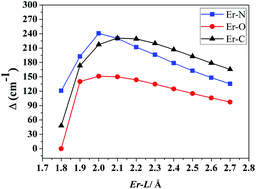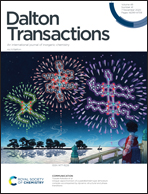Why lanthanide ErIII SIMs cannot possess huge energy barriers: a theoretical investigation†
Abstract
Complete active space self-consistent field (CASSCF) combined with restricted active space spin interaction with spin–orbit coupling (RASSI-SO) was used to probe why single-ion magnets (SIMs) composed of the “prolate” lanthanide ion ErIII cannot possess huge energy barriers. According to the proposal by Long et al., equatorially coordinated ligand environments are preferable for “prolate” lanthanide ions to have large energy barriers. However, our calculations show that the larger gx,y values in the first excited Kramers’ doublets (KDs) induced by the surrounding equatorially coordinated ligands lead to their larger transversal magnetic moments which result in fast quantum tunneling of magnetizations (QTMs) in their first excited states. Therefore, the spin-phonon transitions can only proceed from the ground to the first excited KDs for our studied three compounds and all models. However, the effective energy barriers Ueff of the three compounds are smaller than the calculated energy gaps between the lowest two KDs due to their more flexible molecular structures. For the above reason, the energy barriers did not increase continuously as we expected when we decreased the Er–L bond lengths. We deduced that mononuclear ErIII compounds cannot easily possess huge energy barriers through enhancing the surrounding equatorially coordinated ligand field.



 Please wait while we load your content...
Please wait while we load your content...